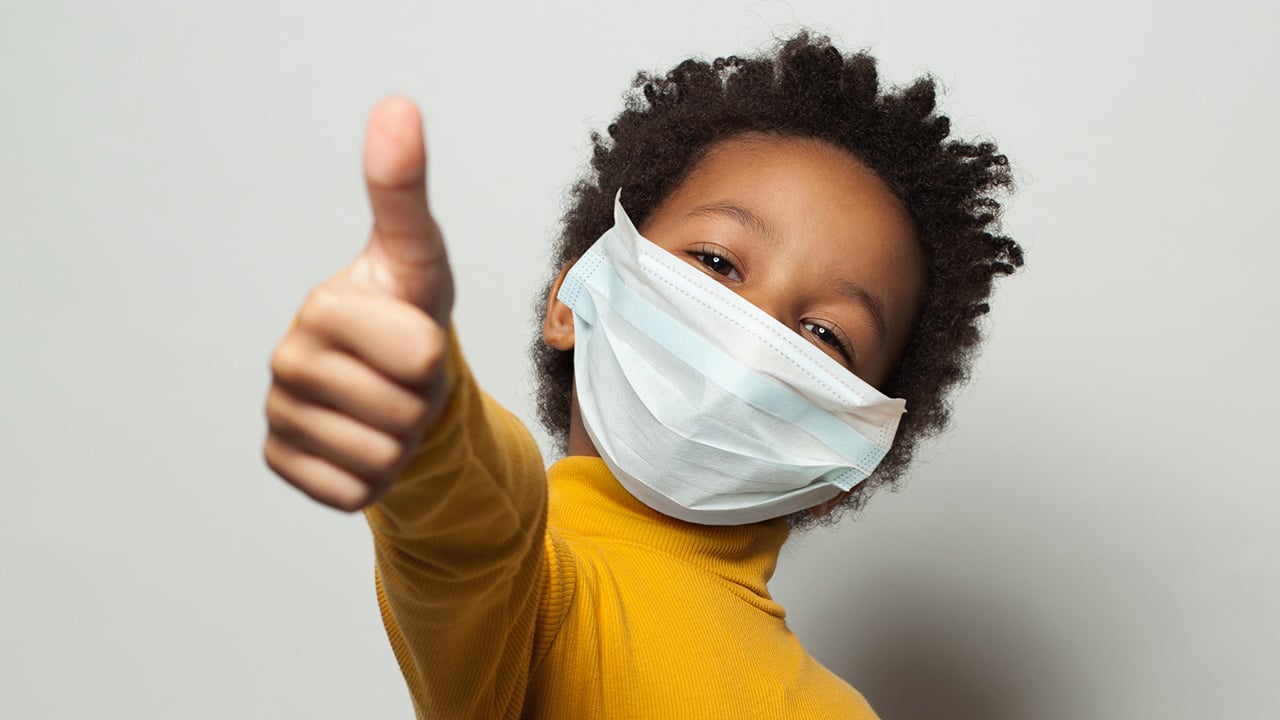We asked a doctor to highlight the best things that happened in kids’ health, despite the pandemic.
All those pandemic headlines dominating our doom-scrolling sessions may have obscured some of the most promising health news in 2020 and 2021. Michelle Ward, a paediatrician at Children’s Hospital of Eastern Ontario, rounded up the top medical developments parents and kids should be celebrating.
Severe asthma episodes have decreased in kids
Some children are actually having a healthier year, as the spread of other non-COVID viruses is decreasing. One sign is the sharp drop in kids visiting hospitals for asthma attacks (also known as “exacerbations”).
Typically, every fall and winter, emergency departments and hospital wards tend to fill up with young asthma patients—asthma is the most common chronic condition in children. But not this year.
The Children’s Hospital of Eastern Ontario in Ottawa had 2,628 emergency department visits and 358 asthma-related hospital admissions in 2019, says paediatric respirologist Dhenuka Radhakrishnan. In 2020, emergency department visits and hospital admissions decreased by more than 57 percent and 65 percent respectively, with only 122 asthma admissions, including the months before the pandemic.
Many paediatric hospitals across the country are seeing the same trend. “The vast majority of asthma exacerbations are caused by respiratory viruses,” says Radhakrishnan. There may be many factors, but undoubtedly, the measures put in place to prevent the spread of COVID-19, such as masking and social distancing, are also curbing asthma attacks, she says.
Radhakrishnan’s message to parents is to continue with their prescribed asthma medications, even if your child seems better. “We need to continue to prevent preventable exacerbations,” she says.
Most kids with a penicillin allergy do not actually need to avoid penicillin
According to new recommendations from the Canadian Paediatric Society, released in 2020, most
children tagged with a penicillin allergy do not, in fact, need to avoid penicillin, amoxicillin and other similar drugs. The recommendations cite research showing that more than 90 percent of children who report these allergies can safely use the medicines after being properly assessed.
This is good news for kids and parents, since penicillin-type medicines are the drugs of choice for many common childhood illnesses, such as ear infections and pneumonia. Resorting to other medicines has been shown to lead to longer hospital stays and poorer outcomes for more serious infections.
In the past, doctors would essentially label kids with a lifelong allergy if they developed hives or other new symptoms while taking a course of antibiotics. Some doctors also advised them to avoid another class of common antibiotics, cephalosporins, because of the possibility of cross-reactions.
Based on your child’s symptoms during their first allergic reaction, the new recommendations can now help your doctor determine whether your kid has a possible allergy, does not have an allergy at all or is low risk, and can use the antibiotic again.
Kids who develop only a rash or hives after taking a dose of antibiotics are now considered “low risk for allergy” if they develop no other serious symptoms. (More serious symptoms would be wheezing, lip swelling, vomiting or dizziness.) Get your kid assessed by their doctor or nurse practitioner—they may be able to safely use the same type of antibiotic again, or they can be given a test dose of antibiotic in a medical office. They may not even need to see an allergist.
If your child has immediate or serious symptoms, stop taking the medicine and seek medical care, then ask for a referral to an allergist for a definitive diagnosis. The allergist can also advise which antibiotics to avoid and which common classes of antibiotics are still an option.
Vaping ads have been banned
One in five Canadian students in grades seven to 12 reports vaping, and this number rises to nearly one in three for grades 10 to 12. More than half of students surveyed by Health Canada in 2018 and 2019 said obtaining e-cigarettes, with or without nicotine, was “fairly easy” or “very easy.” But in July 2020, Health Canada banned the advertising of vaping products anywhere that it could be seen or heard by youth. Vaping products can’t be promoted in any media, on buses or subways, in recreational facilities, or anywhere else where kids may be. Retail businesses that sell vaping products must store them out of sight (but they can advertise that they carry them). The regulations apply in all provinces and territories in Canada.
There’s a new longer-term contraceptive implant option with few side effects
A long-awaited contraceptive implant was finally approved by Health Canada in 2020, and it’s likely to replace other pregnancy-prevention methods for many teens: Nexplanon is the first progestin-only implant and it’s as effective as popular progestin-only IUDs, such as Mirena, but with only a minor procedure needed for insertion.
Nexplanon is a matchstick-sized flexible plastic rod placed under the skin of the upper arm. It releases progestin (the synthetic form of progesterone), but no estrogen. The implant can be left in place for up to three years and tends to have fewer side effects than estrogen-containing forms of contraception, such as most birth control pills. (Nexplanon’s most common side effect is a change in the menstrual cycle, often with a decrease in the length or flow of periods. Some women stop menstruating completely.)
You also don’t need to remember to take a daily pill, and you can depend on the device for longer-term contraception. Like Mirena, Nexplanon is 99 percent effective at preventing pregnancy. Upon removal, it’s possible to conceive as soon as seven to 14 days later.
